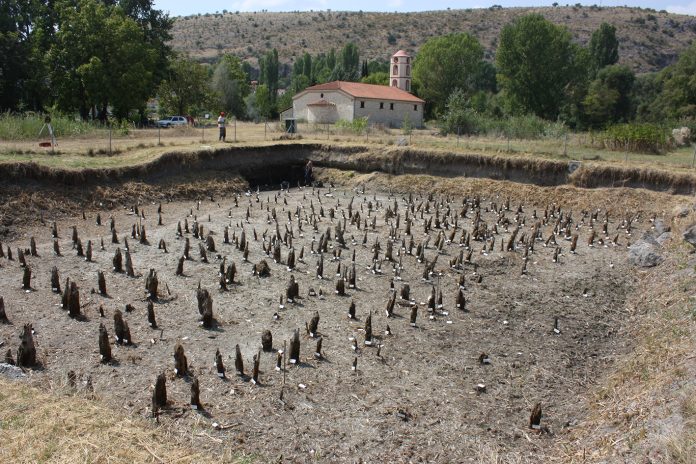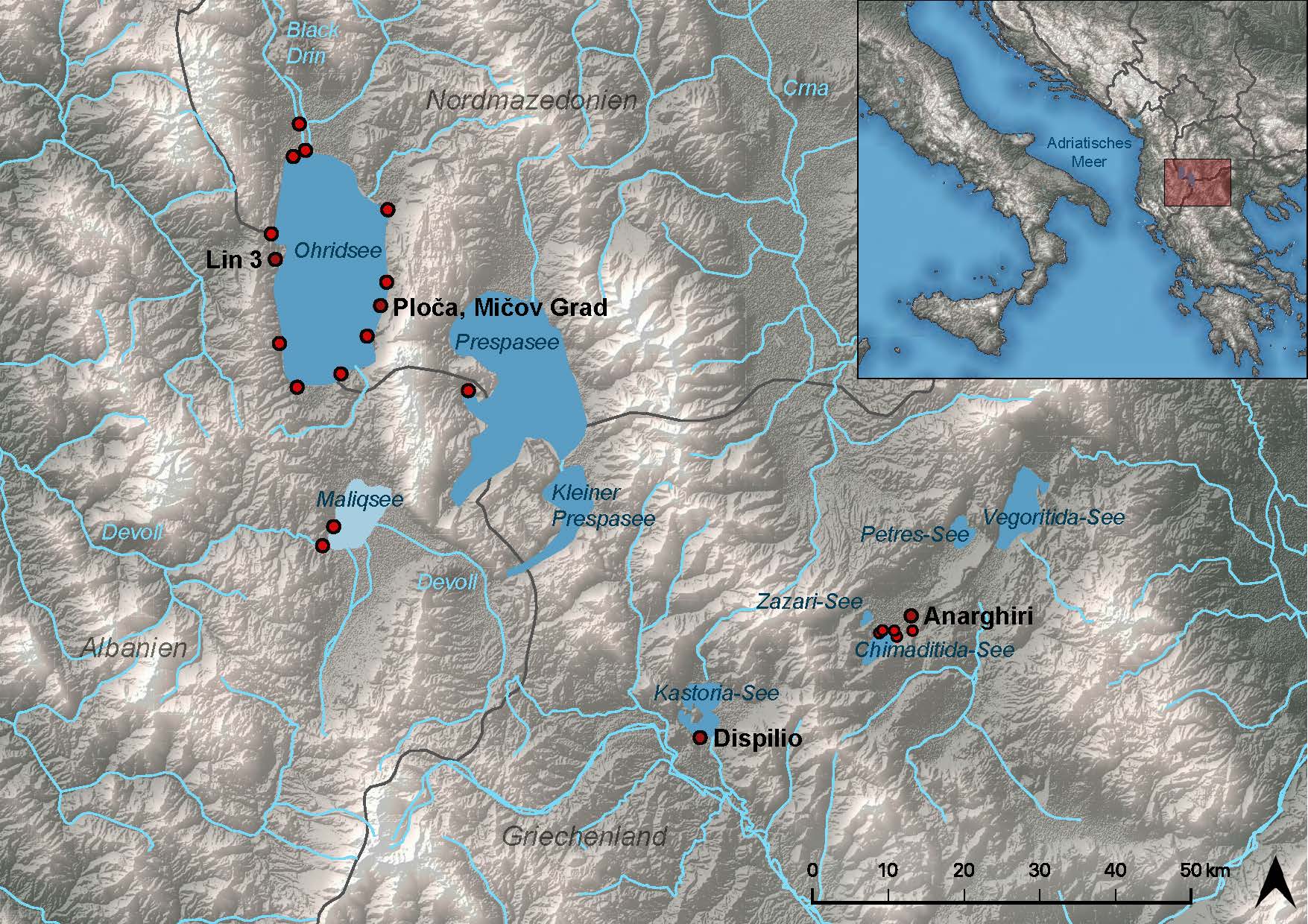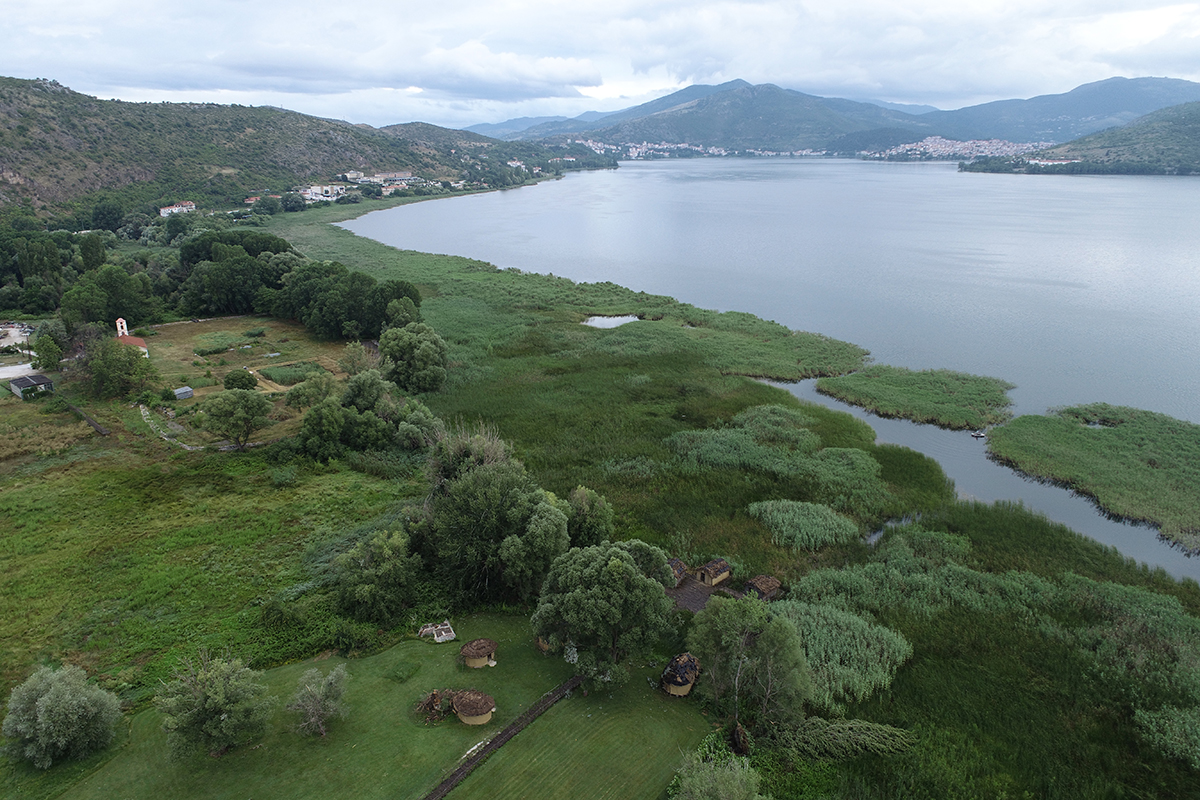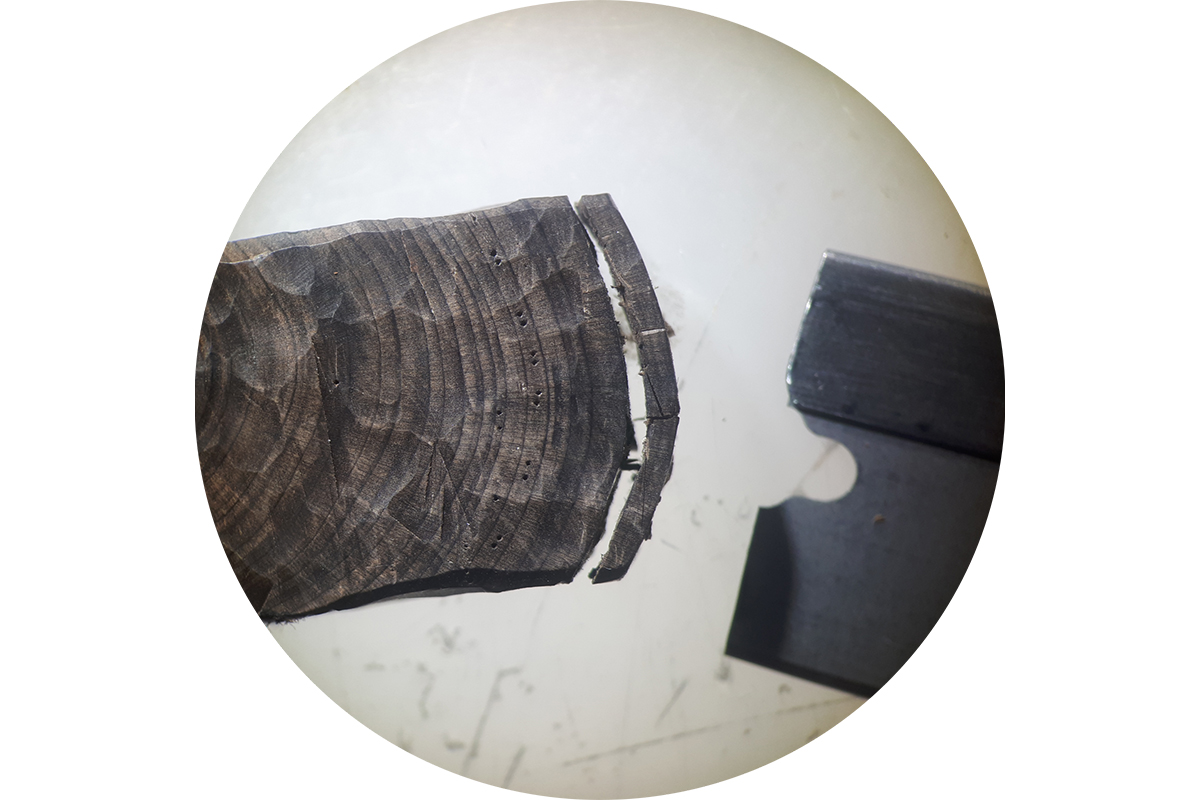Researchers at the University of Bern have for the first time been able to pin down a prehistoric settlement of early farmers in northern Greece dating back more than 7,000 years to the year. For this they combined annual growth ring measurements on wooden building elements with the sudden spike of cosmogenic radiocarbon in 5259 BC. This provides a reliable chronological reference point for many other archaeological sites in Southeast Europe.
Dating finds plays a key role in archaeology. It is always essential to find out how old a tomb, settlement or single object is. Determining the age of finds from prehistoric times has only been possible for a few decades. Two methods are used for this: dendrochronology, which enables dating on the basis of sequences of annual rings in trees, and radiocarbon dating, which can calculate the approximate age of the finds by the decay rate of the radioactive carbon isotope 14C contained in the tree rings.
A team led by the Institute of Archaeological Sciences at the University of Bern has now succeeded in precisely dating timber from the archaeological site of Dispilio in northern Greece, where dating to the year had previously not been possible, to different building activities between 5328 and 5140 BC. The researchers made use of high-energy particles from space, which can be reliably dated to 5259 BC. Their research has been published in the journal Nature Communications.
Tree-ring chronologies and the 14C method have their limits
Dendrochronology uses characteristic patterns of broad and narrow annual growth rings in wood, which are influenced by climatic conditions. As a result, a wooden object can be dated by comparing the annual growth ring widths with already existing standard or regional chronologies. “In Central Europe there is a tree-ring chronology that goes back almost 12,500 years into the past – to the year 10,375 BC. However, this chronology only applies to certain regions. There is no consistent chronology for the Mediterranean region,” says the lead author of the study, Andrej Maczkowski from the Institute of Archaeological Sciences at the University of Bern.
Therefore, dendrochronological dating from this region must be classified as ‘floating’ using radiocarbon dating. As long as a tree is alive, it absorbs the radioactive isotope 14C (radiocarbon) contained in the Earth’s atmosphere through photosynthesis. When it dies, it no longer absorbs 14C; the isotope decays with a half-life of 5730 years. A laboratory measurement method can then be used to determine how much 14C is still contained in a particular tree ring and thus calculate the tree’s approximate time of death over the known half-life. “However, the accuracy of such classifications is in the best case within the range of decades,” says Maczkowski. “Until recently, it was therefore believed that dendrochronological dating to the year was only possible if a continuous regional tree-ring chronology was available, which is the case for prehistoric periods in just three regions worldwide: this is the southwestern United States, the northern Alpine foothills and England/Ireland,” explains Albert Hafner, Professor of Prehistoric Archaeology at the University of Bern and senior author of the study.
Paradigm shift thanks to Japanese physicist
In 2012, a solution to the problem emerged: Japanese physicist Fusa Miyake discovered that a massive influx of cosmic rays, presumably due to solar flares, can cause an uptick in the atmosphere’s 14C content, which is deposited in the respective years’ tree rings. These spikes can be accurately dated on the basis of long tree-ring chronologies, and because they are global events, they are important anchor points, especially in regions without consistent annual growth ring chronologies. “Miyake recognized the first anchor points of this kind and thus brought about a paradigm shift in prehistoric archaeology,” says Albert Hafner. Today, a dozen of these Miyake events are known up until 12,350 BC, and the two important events in 5259 and 7176 BC were only discovered in 2022 by researchers at ETH Zurich. No such events of similar magnitude have been recorded in the past few centuries. If an event of this magnitude, as in 5259 BC, happens today it will likely have a disastrous effect on telecommunications and electronics.
Miyake event enables dating in Dispilio
The research team from the EXPLO project led by the University of Bern (see box) has succeeded in establishing an annual growth ring chronology spanning 303 years, which ends in 5140 BC, by analyzing 787 pieces of timber from the archaeological site of Dispilio on Lake Orestida in northern Greece. The identified settlement phases show various house building activities over 188 years between 5328 and 5140 BC. This precise dating is possible because there was a known Miyake event during this period in 5259 BC.
Researchers at ETH Zurich were able to detect a spike in radiocarbon content during this time by radiocarbon dating several individually defined annual growth rings. It was therefore a question of reproducing this peak, which is reflected globally in the annual growth ring chronologies of Siberian larch, American pine, and European oak, on the annual growth ring chronology from Dispilio in Greece and connecting it to the anchor point 5259 BC. “The Balkans is therefore the first region in the world to benefit from this paradigm shift and to be able to successfully determine absolute dating independently of a consistent calendar,” says Albert Hafner.
Andrej Maczkowski adds: “We expect that other chronologies for the region from this period can now be linked to the ‘Dispilio Chronology’ in rapid succession. This paves the way to developing a regional dendrochronology for the southern Balkans.“The Balkans have the oldest lakeside settlements in Europe, whose sites are dated to just after 6000 BC. The region played a key role in the expansion of agriculture in Europe.
Publication details:
Maczkowski, Andrej, Pearson, Charlotte, Francuz, John, Giagkoulis, Tryfon, Szidat, Sönke, Wacker, L. Bolliger, Matthias, Kotsakis, Kostas, Hafner, Albert. (2024). Absolute dating of the European Neolithic using the 5259 BC rapid 14C excursion. Nat Commun 15, 4263 (2024). https://doi.org/10.1038/s41467-024-48402-1 (Open access)




